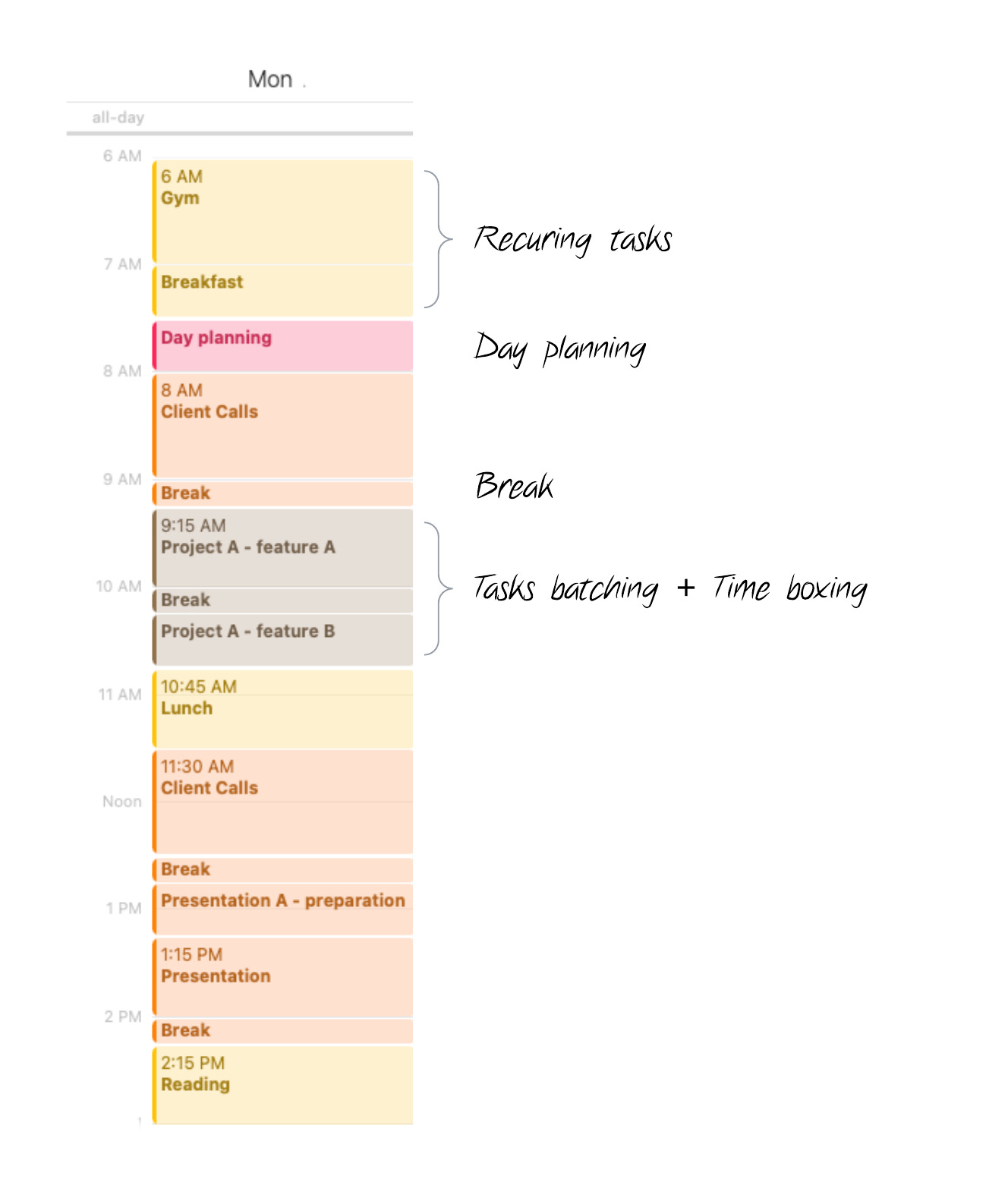One Thing at a Time: The Key to Efficiency
The Harm of Multitasking
Research consistently shows that doing more than one task at a time takes a toll on productivity and overall performance.
Even for low-complexity tasks where switch costs are relatively small (a few tenths of a second per switch) they can add up to large amounts when we switch repeatedly back and forth between tasks. It was found that even momentary mental blocks caused by shifting between tasks can result in a loss of productivity of up to 40%. As tasks get more complex we lose significantly more time. The time costs are also greater when we need to switch to relatively unfamiliar tasks (complexity).
Predictable tasks switching (by schedule) incur smaller costs than random task switching. And switching between tasks in the same context has a much lower cost in comparison to switching to tasks in a new context.
Key suggestions
Minimize Distractions
By minimizing distractions we can maintain focus and avoid task switching. There are several strategies that you can use:
Eliminate visual distractions: Remove all unnecessary items from your workspace and keep your desk clean and clutter-free.
Minimize auditory distractions: If you are in a noisy space use noise-cancelling headphones or white noise machines to block out background noise.
Turn off notifications: Disable notifications on your computer and phone during focused work. Use ‘silent mode‘ or ‘focus mode’ that can be set up to allow only certain important notifications.
Create physical barriers: Use an isolated room or dividers to block out visual distractions and create a sense of privacy.
Set clear boundaries: Communicate with others that you need uninterrupted time to work. You can buy and use physical “Do Not Disturb” signs to communicate it.
Use Time Scheduling
“Sometimes people ask why I bother with such a detailed level of planning. My answer is simple: it generates a massive amount of productivity. A 40 hour time-blocked work week, I estimate, produces the same amount of output as a 60+ hour work week pursued without structure.”, Cal Newport, author of “Deep Work“.
Step 1: Use backlog of tasks
Make an inventory of your incoming tasks including deadlines and level of importance to prioritize them in your backlog/to-do list.
Also, keep a list of recurring tasks to ensure enough time is allocated for them: learning, sport, dinner, etc.
Then daily schedule out the next work day or do it each morning before work starts. It can take just 20 mins.
Step 2: Time Blocking
Time blocking is scheduling specific blocks of time for a specific task or activity on your calendar. This technique was popularized by Cal Newport.
It is already better than just using to-do lists as they:
lack the context of what time you have available
ignore not-urgent but important tasks like learning, sport, etc.
lack commitment device
Task batching
Task batching is an element of time blocking. When you batch tasks, you group similar tasks (tasks in the same context) together so you can work on them at once. As you may remember switching between tasks in the same context has a much lower cost in comparison to switching to tasks in a new context.
Examples:
A software developer might switch between coding different features of a project, testing the code, and reviewing the work of their colleagues.
A sales representative might switch between making calls to potential customers, sending follow-up emails, and updating customer information in their CRM.
A student might switch between reading different textbooks, taking notes, and reviewing past assignments when studying for an exam.
Day theming is an extreme example of task batching when you allocate an entire day for a group of tasks (same context).
Timeboxing
Timeboxing is an element of time blocking. They are similar but there is an important difference.
Time blocking suggests scheduling specific blocks of time for a specific task. For example, "I will develop code for a project from 9 am to 12 am on Monday."
In contrast, time boxing suggests imposing a limit on how much time is allocated to a specific task. For example: "I will finish development of feature A for a project between 9 am to 11 am. And will test it from 11 am to 12 am".
Timeboxing helps to fight Parkinson’s law which states that work expands to fill all the time available for its completion. It happens as we tend to spend more time on a task than we should, affected by the time that is perceived to be available (circumstantial) rather than how long the task can really take (objective).
Scheduling specific times for tasks requires estimations which, over time, can help you make them more realistic.
Breaks
Research suggests that work intervals of 90-120 minutes followed by breaks of 15-20 minutes are effective for maintaining focus. You need to experiment to find the optimal frequency of breaks and their duration for you. They can be different for different tasks.
During breaks make sure to move around and ideally spend time outside. Do something physically active that allows you to forget about work for a while.
As a side topic, I want to mention 2 popular work/rest techniques:
25/5 (Pomodoro Technique): intervals of 25 mins of focused work with 5 mins breaks. This technique was verified by research and while it is better than no technique small intervals of fixed duration of work and rest make it not suitable for all tasks, especially ones that require long periods of concentration.
52/17 (52-17 Rule): intervals of 52 mins of focused work with 17 mins breaks. This technique was popularized by the productivity software DeskTime, which analyzed the habits of its users to find the that optimal work-to-break ratio for most of the users was 52/17.



